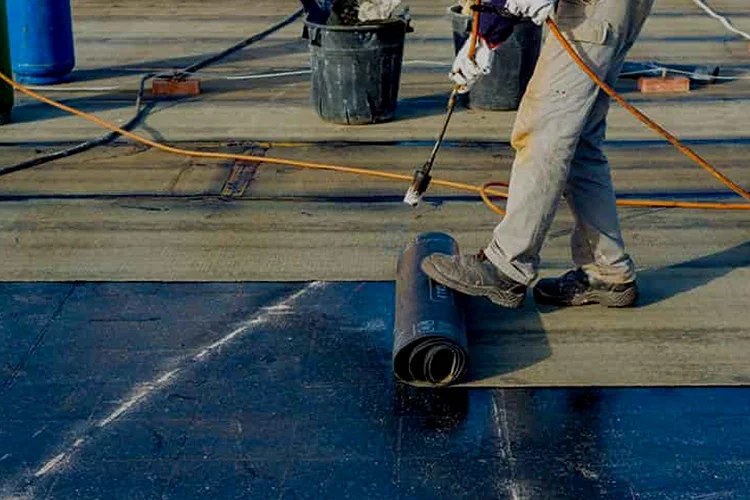Waterproofing is a key aspect of preserving the stability and longevity of any house or structure. As a householder seeking to protect your investment from the damaging effects of leaks or a construction professional looking to create durable structures, knowing how to pick the right waterproofing solutions is essential. Water damage can lead to costly repairs, mildew , and serious structural issues, turning proper waterproofing a priority for all property owners.
In this definitive manual, we will explore the various facets of waterproofing, from identifying the clues that your home needs waterproofing to comprehending the distinctions between interior and exterior solutions. We will also look into the frequently encountered misconceptions surrounding waterproofing, helping you to choose wisely. With Aluneed basement waterproofing and products, you can safeguard your home from water-related problems and prevent significant sums in future repairs.
Understanding the Importance of Waterproofing
Waterproofing is essential for any building as it defends structures from water damage, which can lead to significant restoration costs and major loss of property value. Moisture seepage does not only pose a risk to physical integrity but also to the well-being of occupants, as dampness can cause mold and fungi growth. By implementing efficient waterproofing measures, property owners can establish a robust defense against the detrimental effects of water.
Neglecting waterproofing can be a costly mistake. The concealed damage from water intrusion can lead to large-scale repair bills that far outstrip the original cost in waterproofing products and services. For instance, untreated moisture issues in basements can undermine the foundation, resulting in major structural problems. Thus, understanding the essential nature of waterproofing can save you thousands of dollars in the long run.
Additionally, waterproofing adds to energy efficiency in buildings. When exteriors, roofs, and basements are sufficiently waterproofed, they help maintain consistent indoor temperatures, reducing the requirement for overly high heating or cooling. This not only reduces utility costs but also boosts overall comfort. Furthermore, a well-protected property is more resilient in harsh weather conditions, ensuring long-term protection for your investment.

Essential Points When Selecting Water-Resistant Products
As you choosing waterproofing solutions, the primary important consideration is the particular area you need to protect. Various surfaces, such as cellars, roofs, and washrooms, have unique requirements. For instance, basement waterproofing often needs solutions that can tolerate hydrostatic pressure, while roof waterproofing demands products that can endure UV damage and temperature fluctuations. Identifying the exposure levels and humidity conditions of the area will help in selecting the most product.
Another important factor is the sort of materials used in the waterproofing solution. Look for high-quality materials that offer durability and longevity. For example, membranes and coatings should be adaptable enough to absorb building movement while maintaining a robust barrier against water penetration. Additionally, consider if you favor a solvent-based, water-based, or cementitious solution, depending on the desired application and ecological impact.
Lastly, the ease of application is crucial. Great site are designed for DIY use, while some may require professional installation. Think about your skill level and whether you have the tools needed for the job. It’s also smart to assess the manufacturer’s instructions and recommendations regarding application conditions, such as temperature and humidity, to ensure best performance.
Frequent Water-Resistance Methods and Strategies
When it comes to safeguarding your home from moisture issues, there are several effective waterproofing methods to think about. One widely-used approach is the use of waterproof membranes, which form a barrier that prevents water from penetrating areas such as cellars, partitions, and tops. These membranes can be fabricated from multiple materials, including rubber, bitumen, or PVC, and are appropriate for both interior and exterior applications. Proper installation is vital to ensure that these membranes perform effectively, thus shielding your property from seepage and infiltration.
An additional effective technique is the use of sealants and coatings. These products are put on immediately to areas and function as a barrier against liquid. For instance, waterproofing paints can be applied to surfaces and roofs to prevent mold and mildew growth, particularly in washrooms and cooking areas. Additionally, elastomeric coatings are ideal for flat roofs, providing adaptability and strength to withstand severe weather conditions while keeping water out. Selecting the suitable sealant for each specific area of your home is crucial to ensure durability and enhanced protection.
For outdoor structures, consider setting up drainage systems and downspouts to divert water away from your home. Trenches, submersible pumps, and gutter drains can effectively reduce the risk of liquid accumulation around foundations and cellars. Together with correct grading of the ground, these drainage methods reduce the chance of penetration. Utilizing a multifaceted approach with these strategies ensures sustained protection against liquid damage, ultimately safeguarding you from expensive repairs in the long run.
